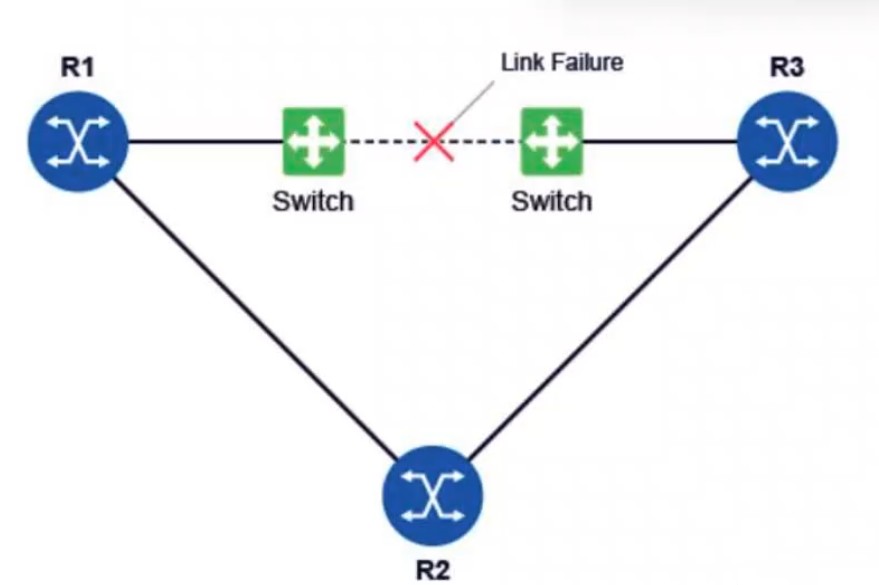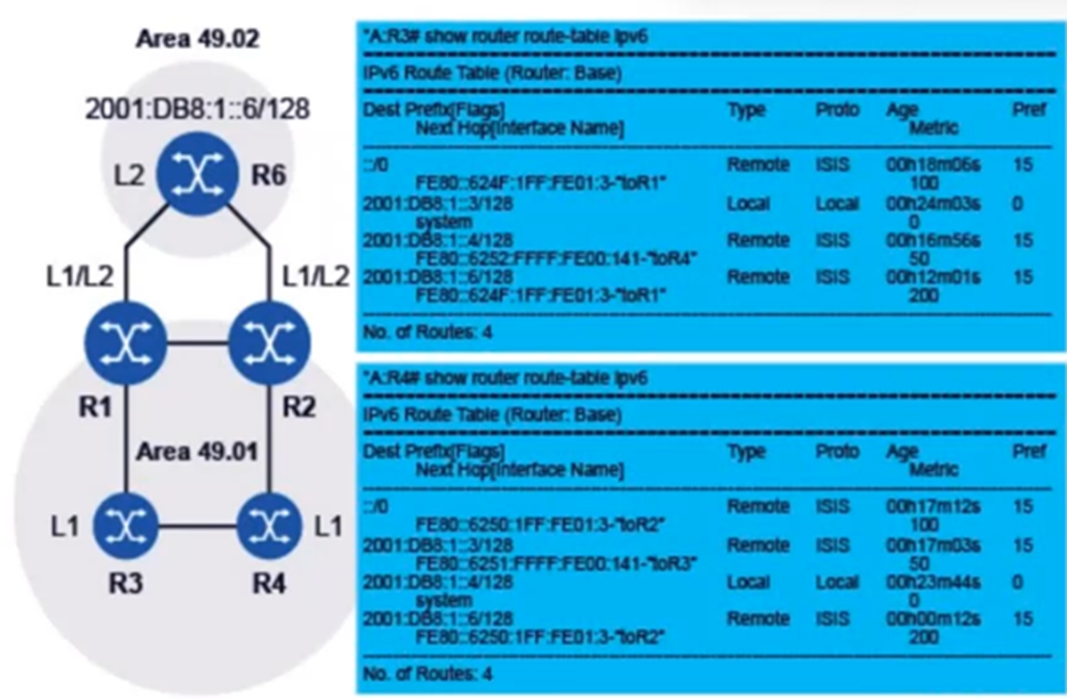Nokia 4A0-112 - Nokia IS-IS Routing Protocol
There are several differences between IS-IS Hello packets used on broadcast interfaces and on point-to-point interfaces.
Which of the following statements is FALSE?
Which of the following statements regarding the databases used by a link-state routing protocol in a single-are routing domain is FALSE?
When multiple routing protocols offer a route for the same prefix, what part of the router is in charge of deciding which route to make active?

All routers in the diagram are running a link-state routing protocol. Before the link failure, all routers have operational adjacencies with each other and there is a BFD session between routers R1 and R3. After the link failure, which of the following affects the routing protocol’s convergence time?
A router is trying to establish an IS-IS adjacency with the DIS on a broadcast link. What event causes the adjacency to change from “Initializing†to “UP�
Consider the exhibit.

All routers are running IS-IS with IPv6 support enabled. Based on the topology shown, and the route tables of routers R3 and R4, which of the following statements is TRUE?
What do the address resolution protocol (ARP) for IPv4 and the neighbor discovery procedures for IPv6 have in common?
A routing domain uses a link-state routing protocol. Which of the following would NOT be an advantage of dividing the entire routing domain into areas?
A router running a link-state routing protocol detects that one of its neighbors is no longer connected to it. The router generates a new link-state advertisement to inform other routers of the topology change. Which of the following is NOT an action that is triggered by this event?

Routers R1, R2, R3, and R4 are running IS-IS. Assuming all interfaces are added to IS-IS as point-to-point and no commands are issued at the interface level to restrict adjacencies, which of the following statements is TRUE?



 RoutersR1andR2have a usage ofL2, meaning they are L2 routers.
RoutersR1andR2have a usage ofL2, meaning they are L2 routers. RoutersR3andR4have a usage ofL1, meaning they are L1 routers.
RoutersR3andR4have a usage ofL1, meaning they are L1 routers. L1 routersonly communicate within their own area.
L1 routersonly communicate within their own area. L2 routerscommunicate between areas.
L2 routerscommunicate between areas.